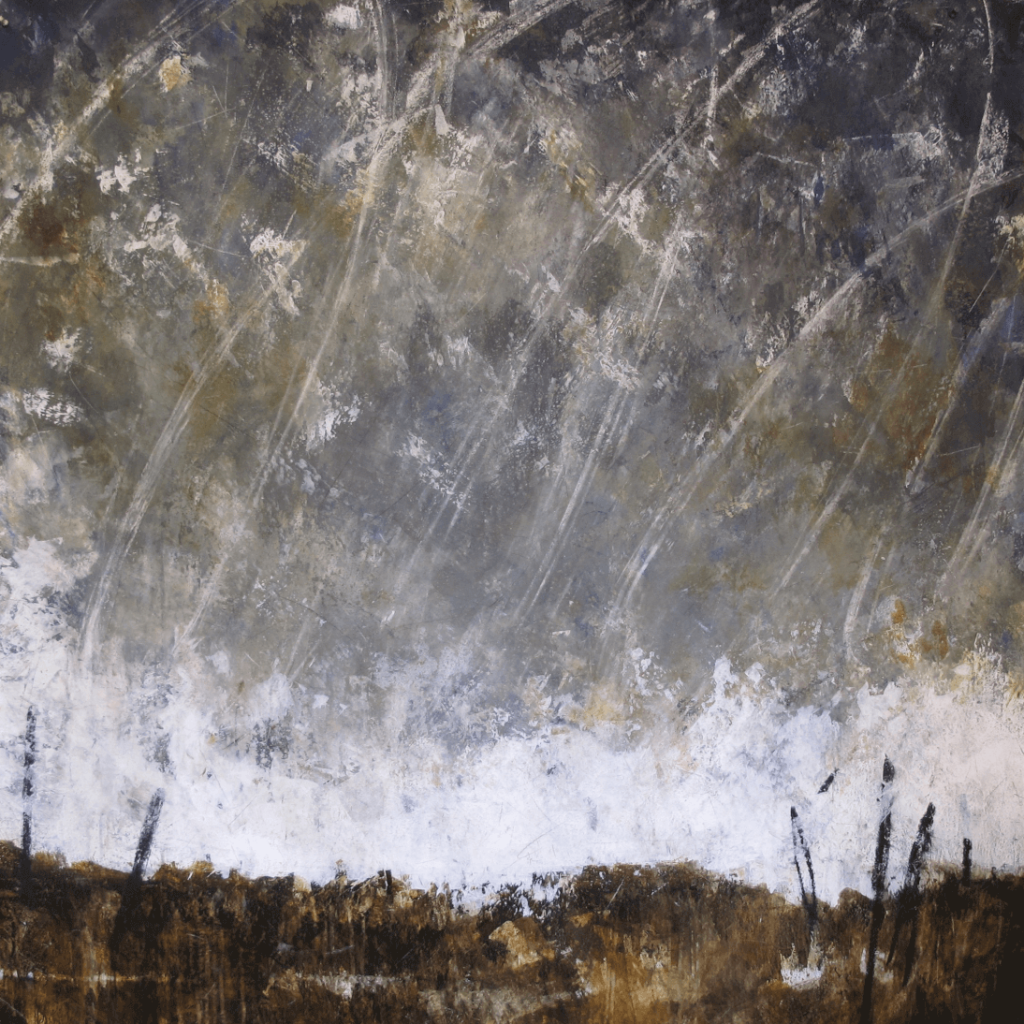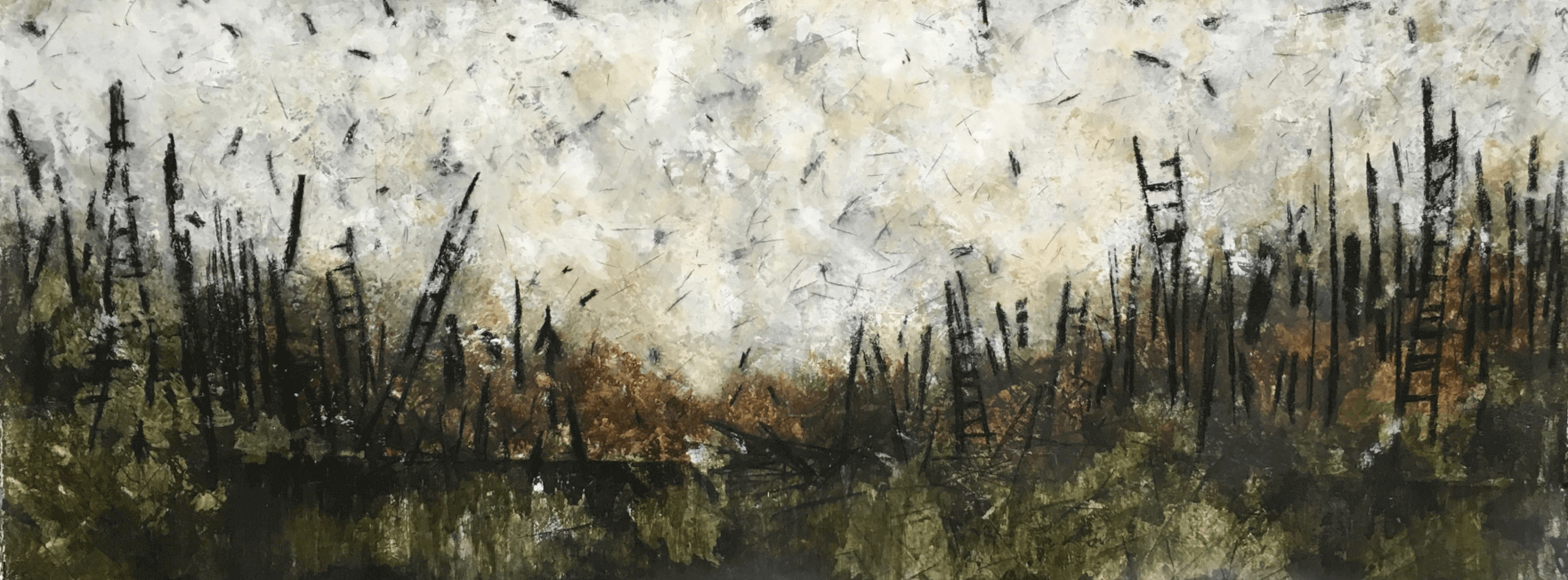
Oregonian Braeden Cox grew up around abstract painting in her father’s artist studio and counts her father’s tutelage as formative in her career. With a dual degree in fine art and digital art from the University of Oregon, Cox gravitates toward mixed media representations of imaginary scenes of her native state. Here, she discusses her art historical inspirations, a profound sense of intangible ennui, and what it’s like to be a woman artist in a man’s world.
“My work is influenced by the German Romantic and Expressionist movements. When I was getting my degree at the University of Oregon, I had to take an art history class. The one that was offered at the time talked about German Romantic painting, and I was enamored by it. I was attracted to the idea that Romantic painters didn’t just paint landscapes but what they felt when they saw the landscapes. I remember looking at the work of Caspar David Friedrich and thinking, ‘He is able to show so much emotion and weight through his color choices.’
I call my paintings abstract landscape. Most of them have a horizon line, which the viewer can usually decipher: there’s the plane and there’s the sky. Jacob’s Valley and Zephyr are about being in a place where you feel like you’ve been there before but haven’t. I have these bizarre feelings about never having been to the places that I dream about but wanting to go so badly. With Jacob’s Valley, I tried to do a panorama, like in some movies where the camera pans and you see the landscape in a grand world. I wanted the viewer to feel like you could wrap a painting around yourself because it’s so big.

Oregon is a heavy influence in my art, even when I don’t think it is. I’m drawn to earthy browns and greens because they’re homey to me. That’s also why I love the Romantic landscapes, because those skies are familiar to the Pacific Northwest. But a lot of the impetus for my work comes from wanting to paint something desolate but calming at the same time. It’s pure imagination—all kinds of worlds I build on—that drives me to paint stories that I’ve made up.
In the past few months, I’ve been looking at Renaissance paintings. One of the artists that I want to read more about is Artemisia Gentileschi—especially as I’m trying to understand the art world as a female artist. I read somewhere that the majority of her paintings feature women as the protagonist, which is awesome. Feminism in art was not something I studied much in school or knew a lot about—I’m still not an expert on it. But I’m trying to piece these things together myself—about going through the motions of being in the art world, seeing paintings that I adore from history (which are inevitably painted by men), and then seeing how women are underrepresented in galleries and museums. And it’s interesting because I use my emotions when I paint my works, so there’s a feminine hand in it. But over the past year, I’ve been thinking about my role in the art world on a whole new level. It’s exciting, because I’m at the start of something that’s so much bigger than me. I can’t wait to see how this is going to change my work.”

